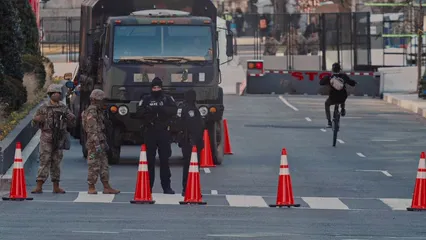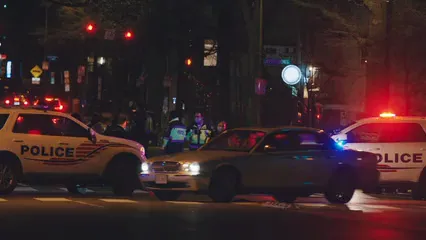- Theft: The most prevalent, with a staggering rate of 1,656.1 incidents per 100,000 residents.
- Burglary: This crime occurs at a rate of 427.6 per 100,000 residents, showing a concerning pattern for residential security.
- Vehicle Theft: Allentown faces one of the highest rates of motor vehicle theft in the nation, with around 199.4 incidents per 100,000 residents.

Neighborhood Crime Analysis
Crime by Neighborhood
When it comes to crime in Allentown, the landscape varies significantly from one neighborhood to another. Some areas shine like diamonds, while others? Well, they might need a little polish. Let’s break it down for you. Safest Neighborhoods:- Krocksville / Kuhnsville – Here, you’ll find a tight-knit community where residents can breathe easy, as crime rates are remarkably low.
- Overlook Springs – This neighborhood boasts a serene environment and a reassuringly safe atmosphere.
- Dorneyville – With a lovely park and friendly neighbors, Dorneyville is a great spot for families looking for peace of mind.
- Minesite – A tranquil place with low crime rates, perfect for anyone who enjoys quieter surroundings.
- Trexler Estates / Trexler Park – Nature lovers rejoice! This area not only has stunning parks but also a low crime rate.
- Crackersport / Guth – This area has seen a rise in property crimes, making residents a bit more cautious.
- Hamilton Park / Cedar Crest College – While it’s popular with students, crime rates here can make one think twice before walking alone at night.
- Parkside Courts / Park Way Manor – A mix of high foot traffic and crime reports can paint a less than rosy picture for this neighborhood.

Local Perceptions of Safety
According to a recent survey conducted among Allentown residents, perceptions of safety vary widely. Out of 46 respondents, here’s how they felt:- Pretty Safe: 41%
- Somewhat Safe: 24%
- Not Safe: 22%
- Very Safe: 13%

Comparative Analysis
Allentown vs. Other Cities
When comparing crime rates, Allentown holds its own against similar cities in Pennsylvania and across the nation. To give you a clearer picture, let’s look at the numbers:| City | Violent Crime Rate (per 100,000) | Property Crime Rate (per 100,000) |
|---|---|---|
| Allentown | 338.42 | 2,248 |
| Bethlehem | 77.2 | 77.2 |
| Catasauqua | 211.5 | 1,782.7 |
| Newark, NJ | 1,230.5 | 3,200 |
| Bridgeport, CT | 1,070.9 | 2,500 |

Historical Crime Trends
Looking back over the past decade, Allentown has experienced some fluctuations in crime rates. For instance, violent crime saw a significant drop in 2022, with only four reported murders—a notable decrease from previous years. The following table details these trends:| Year | Violent Crime Rate | Property Crime Rate |
|---|---|---|
| 2018 | 386.5 | 2,283 |
| 2019 | 228.1 | 2,300 |
| 2020 | 202.4 | 2,200 |
| 2022 | 79.8 | 2,248 |


Law Enforcement and Community Response
Overview of Law Enforcement in Allentown
Allentown’s police force comprises 232 dedicated officers. This translates to about 1.9 police officers for every 1,000 residents, which is slightly above the Pennsylvania average. However, it’s notably lower than the national average of 3.3 officers per 1,000 residents. This discrepancy raises questions about resource allocation and the need for effective crime prevention strategies. The Allentown Police Department focuses on community policing initiatives. These programs aim to build relationships between officers and residents. Community policing fosters transparency and collaboration, resulting in improved trust and communication. The visible presence of police officers in neighborhoods helps deter crime and assures residents that their safety is a priority. Statistics show that community policing initiatives have positively impacted crime rates. In areas where these programs are actively implemented, residents report feeling safer. This sense of safety translates to lower crime incidents. The commitment to fostering a cooperative environment between law enforcement and the community is crucial in pushing crime rates down.
Community Safety Programs
Allentown has initiated several community safety programs. These initiatives focus on reducing crime while enhancing the quality of life for residents. One notable program is the Neighborhood Watch, which encourages residents to look out for each other. Neighbors watch for suspicious activities, fostering a sense of camaraderie and collective responsibility. Additionally, the police department conducts regular safety workshops. These workshops educate residents about crime prevention strategies. Topics often include home security measures, personal safety tips, and emergency preparedness. Engaging the community through such programs helps empower residents to take proactive steps toward their safety. And to be even more prepared, consider assembling an Emergency Preparedness Kit for your family! Neighborhood watch groups play a vital role in crime reduction. They promote information sharing among community members. This collaborative effort allows residents to stay informed about potential threats and suspicious activities. Such proactive measures can significantly reduce the likelihood of crime in neighborhoods. Community engagement is essential for the success of these initiatives. The more involved residents are, the safer their neighborhoods become. By working together with law enforcement, communities can develop tailored solutions to address local crime issues. Ultimately, a united front against crime fosters a safer Allentown. And for those who want to stay alert in emergency situations, a reliable LED Flashlight can be a lifesaver!
Conclusion
Analyzing crime statistics in Allentown reveals key insights. The city faces challenges, particularly with property crimes. However, proactive measures from law enforcement and community engagement indicate positive trends. Programs focused on community policing and safety initiatives are making a difference. Despite improvements, ongoing challenges remain. Addressing property crime, especially vehicle theft, requires continuous effort. Local authorities must remain vigilant and adaptive in their strategies. Engaging residents in safety programs will be crucial for sustained progress. And to help with personal safety, consider investing in Pepper Spray for self-defense! In conclusion, community involvement is paramount. Residents must stay informed and participate in initiatives aimed at promoting safety. By working together, Allentown can continue to improve its safety landscape. A collective effort will build trust between law enforcement and the community, ultimately leading to a safer environment for all.
FAQs
What are the most common crimes in Allentown?
In Allentown, property crimes are the most prevalent. The property crime rate stands at 23.70 per 1,000 residents. This includes theft, burglary, and motor vehicle theft. In fact, theft alone accounts for a staggering 1,656.1 incidents per 100,000 residents. Violent crimes, while less common, still exist. The violent crime rate is 3.44 per 1,000 residents, with assault being the most frequent type.
How does Allentown compare to other cities in Pennsylvania?
When comparing Allentown to other Pennsylvania cities, it’s clear that the crime rate is notably higher. For example, Allentown’s violent crime rate is around 338.42 per 100,000 residents, which is higher than nearby cities like Bethlehem. However, it is lower than larger metropolitan areas like Philadelphia. This puts Allentown in a unique position, facing challenges typical of urban areas while still being safer than some larger cities nationwide.
What steps are being taken to improve safety in Allentown?
Allentown is actively working to enhance community safety through various initiatives. The police department emphasizes community policing to foster relationships with residents. Neighborhood watch programs are also encouraged, empowering citizens to report suspicious activities. Additionally, the city hosts safety workshops that educate the public about crime prevention strategies. These efforts aim to create safer neighborhoods by engaging and informing residents.
How can residents stay informed about crime in their neighborhoods?
Staying informed about local crime can be crucial for personal safety. Residents can utilize several resources for ongoing updates. Local law enforcement agencies often provide timely information through their websites and social media. Apps like Nextdoor can offer neighborhood-specific alerts and community discussions. Additionally, residents can subscribe to local news outlets for coverage on crime reports and safety tips.
What resources are available for crime victims in Allentown?
Allentown offers various resources for crime victims. The Lehigh County Victim Assistance Program provides support and advocacy for individuals affected by crime. They offer assistance with navigating the legal system and accessing counseling services. Additionally, the Allentown Police Department has a dedicated victim services unit that helps individuals find resources and support. Hotlines and local shelters are also available for those needing immediate assistance.
Please let us know what you think about our content by leaving a comment down below!
Thank you for reading till here 🙂
All images from Pexels
Introduction
Crime statistics serve as a vital tool for understanding the safety landscape in any city, including Allentown, Pennsylvania. For residents, potential movers, and policymakers, these statistics shed light on the current state of affairs in their community. They help gauge whether to feel secure while walking home at night or if it’s time to invest in a good Home Security Camera System. Understanding crime rates and trends is essential for several reasons. First, it allows residents to make informed decisions about their safety and well-being. Second, it aids policymakers in crafting effective crime prevention strategies tailored to specific community needs. By analyzing crime data, decision-makers can allocate resources wisely, ensuring that neighborhoods receive the attention they require. In this article, we pull from reliable sources like the FBI and local law enforcement to provide a thorough examination of Allentown’s crime statistics. These institutions employ rigorous data collection methods, ensuring accuracy and relevance. The goal here is simple: to offer a detailed analysis of crime statistics in Allentown, exploring their implications for safety and community planning. Through meticulous analysis, this article aims to unravel the complexities of crime in Allentown while keeping it engaging and informative. We aspire to equip you with the knowledge necessary to navigate your surroundings safely and to understand the broader implications of crime trends in your community.
Understanding Crime Statistics
What Are Crime Statistics?
Crime statistics are numerical representations of crime incidents within a specific area over a designated timeframe. They are significant because they provide insight into the safety of a community. By examining these figures, residents can assess the risk of becoming a victim of crime and make informed decisions about their surroundings. Crime can broadly be categorized into two types: violent crimes and property crimes. Violent crimes include serious offenses like assault, robbery, murder, and sexual assault. These crimes often have a direct impact on individuals and can instill fear in communities. Property crimes, on the other hand, involve the theft or destruction of property, such as burglary, larceny, and motor vehicle theft. While they can be less personally threatening than violent crimes, they still pose a significant concern for community safety. To combat these safety concerns, consider investing in a Wireless Security Alarm System. This innovative solution not only protects your home but also gives you peace of mind, allowing you to sleep soundly knowing that your property is being monitored.
How Crime Statistics Are Collected
Crime statistics are gathered using various methodologies. The FBI’s Uniform Crime Reporting (UCR) Program is one of the primary sources for these statistics. This program collects data from over 18,000 local law enforcement agencies across the United States, ensuring a comprehensive overview of crime trends. Local law enforcement agencies also contribute valuable data. These agencies report incidents, arrests, and other relevant information to provide a fuller picture of crime in their respective areas. The importance of comprehensive data collection cannot be overstated. Accurate and thorough reporting ensures that communities receive the most reliable information, allowing for effective safety measures and community planning. In summary, understanding crime statistics is crucial for assessing community safety. By looking at the types of crime and the methods used to collect data, residents and policymakers can take proactive steps toward creating a safer environment in Allentown. And while you’re at it, don’t forget to equip yourself with a Personal Safety Alarm to stay protected when you’re out and about!
Allentown Crime Rates Overview
General Crime Rate Overview
Allentown, Pennsylvania, has a crime rate that stands out when compared to national averages. The overall crime rate in Allentown is approximately 27 crimes per 1,000 residents. This figure is notably higher than the national average of 22.7 crimes per 1,000 residents. Residents in Allentown face a roughly 1 in 37 chance of becoming a victim of either violent or property crime. In recent years, crime rates have seen some fluctuations. Year-over-year changes suggest a gradual decrease in certain crime categories, particularly violent crimes, which have become less frequent. However, property crimes still pose significant challenges to community safety. Local law enforcement is continuously working to improve these statistics, focusing on high-crime areas and implementing preventive measures. The ongoing assessment of crime trends is vital for understanding the effectiveness of these interventions. If you’re concerned about property crime, consider investing in an Smart Doorbell Camera that allows you to monitor who’s at your door anytime, anywhere!
Violent Crime Statistics
Digging deeper into the violent crime statistics reveals a rate of 3.44 per 1,000 residents. This number indicates that while violent crime exists in Allentown, it is lower compared to some urban areas across the country. Breaking down the violent crime rate further, we find that it includes various categories: assault, robbery, rape, and murder.- Assault: The most common violent crime, with a rate of around 188.7 incidents per 100,000 residents.
- Robbery: This type of crime occurs at a rate of approximately 139.5 per 100,000 residents.
- Rape: Statistically, Allentown reports around 52.5 incidents per 100,000 residents, which is higher than the national average.
- Murder: The city has seen its murder rate fluctuate, with a reported 5.7 per 100,000 residents.
For a deeper understanding of the safety landscape in Allentown, consider exploring the fremont crime statistics, which provide a comprehensive analysis of safety in various communities.

Property Crime Statistics
Turning our attention to property crime, Allentown has a property crime rate of 23.70 per 1,000 residents. This figure is substantially higher than the national average of 35.4 per 1,000 residents, indicating that property crime remains a significant issue for the community. A closer look at the types of property crimes reveals the following breakdown:- Theft: The most prevalent, with a staggering rate of 1,656.1 incidents per 100,000 residents.
- Burglary: This crime occurs at a rate of 427.6 per 100,000 residents, showing a concerning pattern for residential security.
- Vehicle Theft: Allentown faces one of the highest rates of motor vehicle theft in the nation, with around 199.4 incidents per 100,000 residents.

Neighborhood Crime Analysis
Crime by Neighborhood
When it comes to crime in Allentown, the landscape varies significantly from one neighborhood to another. Some areas shine like diamonds, while others? Well, they might need a little polish. Let’s break it down for you. Safest Neighborhoods:- Krocksville / Kuhnsville – Here, you’ll find a tight-knit community where residents can breathe easy, as crime rates are remarkably low.
- Overlook Springs – This neighborhood boasts a serene environment and a reassuringly safe atmosphere.
- Dorneyville – With a lovely park and friendly neighbors, Dorneyville is a great spot for families looking for peace of mind.
- Minesite – A tranquil place with low crime rates, perfect for anyone who enjoys quieter surroundings.
- Trexler Estates / Trexler Park – Nature lovers rejoice! This area not only has stunning parks but also a low crime rate.
- Crackersport / Guth – This area has seen a rise in property crimes, making residents a bit more cautious.
- Hamilton Park / Cedar Crest College – While it’s popular with students, crime rates here can make one think twice before walking alone at night.
- Parkside Courts / Park Way Manor – A mix of high foot traffic and crime reports can paint a less than rosy picture for this neighborhood.

Local Perceptions of Safety
According to a recent survey conducted among Allentown residents, perceptions of safety vary widely. Out of 46 respondents, here’s how they felt:- Pretty Safe: 41%
- Somewhat Safe: 24%
- Not Safe: 22%
- Very Safe: 13%

Comparative Analysis
Allentown vs. Other Cities
When comparing crime rates, Allentown holds its own against similar cities in Pennsylvania and across the nation. To give you a clearer picture, let’s look at the numbers:| City | Violent Crime Rate (per 100,000) | Property Crime Rate (per 100,000) |
|---|---|---|
| Allentown | 338.42 | 2,248 |
| Bethlehem | 77.2 | 77.2 |
| Catasauqua | 211.5 | 1,782.7 |
| Newark, NJ | 1,230.5 | 3,200 |
| Bridgeport, CT | 1,070.9 | 2,500 |

Historical Crime Trends
Looking back over the past decade, Allentown has experienced some fluctuations in crime rates. For instance, violent crime saw a significant drop in 2022, with only four reported murders—a notable decrease from previous years. The following table details these trends:| Year | Violent Crime Rate | Property Crime Rate |
|---|---|---|
| 2018 | 386.5 | 2,283 |
| 2019 | 228.1 | 2,300 |
| 2020 | 202.4 | 2,200 |
| 2022 | 79.8 | 2,248 |


Law Enforcement and Community Response
Overview of Law Enforcement in Allentown
Allentown’s police force comprises 232 dedicated officers. This translates to about 1.9 police officers for every 1,000 residents, which is slightly above the Pennsylvania average. However, it’s notably lower than the national average of 3.3 officers per 1,000 residents. This discrepancy raises questions about resource allocation and the need for effective crime prevention strategies. The Allentown Police Department focuses on community policing initiatives. These programs aim to build relationships between officers and residents. Community policing fosters transparency and collaboration, resulting in improved trust and communication. The visible presence of police officers in neighborhoods helps deter crime and assures residents that their safety is a priority. Statistics show that community policing initiatives have positively impacted crime rates. In areas where these programs are actively implemented, residents report feeling safer. This sense of safety translates to lower crime incidents. The commitment to fostering a cooperative environment between law enforcement and the community is crucial in pushing crime rates down.
Community Safety Programs
Allentown has initiated several community safety programs. These initiatives focus on reducing crime while enhancing the quality of life for residents. One notable program is the Neighborhood Watch, which encourages residents to look out for each other. Neighbors watch for suspicious activities, fostering a sense of camaraderie and collective responsibility. Additionally, the police department conducts regular safety workshops. These workshops educate residents about crime prevention strategies. Topics often include home security measures, personal safety tips, and emergency preparedness. Engaging the community through such programs helps empower residents to take proactive steps toward their safety. And to be even more prepared, consider assembling an Emergency Preparedness Kit for your family! Neighborhood watch groups play a vital role in crime reduction. They promote information sharing among community members. This collaborative effort allows residents to stay informed about potential threats and suspicious activities. Such proactive measures can significantly reduce the likelihood of crime in neighborhoods. Community engagement is essential for the success of these initiatives. The more involved residents are, the safer their neighborhoods become. By working together with law enforcement, communities can develop tailored solutions to address local crime issues. Ultimately, a united front against crime fosters a safer Allentown. And for those who want to stay alert in emergency situations, a reliable LED Flashlight can be a lifesaver!
Conclusion
Analyzing crime statistics in Allentown reveals key insights. The city faces challenges, particularly with property crimes. However, proactive measures from law enforcement and community engagement indicate positive trends. Programs focused on community policing and safety initiatives are making a difference. Despite improvements, ongoing challenges remain. Addressing property crime, especially vehicle theft, requires continuous effort. Local authorities must remain vigilant and adaptive in their strategies. Engaging residents in safety programs will be crucial for sustained progress. And to help with personal safety, consider investing in Pepper Spray for self-defense! In conclusion, community involvement is paramount. Residents must stay informed and participate in initiatives aimed at promoting safety. By working together, Allentown can continue to improve its safety landscape. A collective effort will build trust between law enforcement and the community, ultimately leading to a safer environment for all.
FAQs
Please let us know what you think about our content by leaving a comment down below!
Thank you for reading till here 🙂
All images from Pexels




